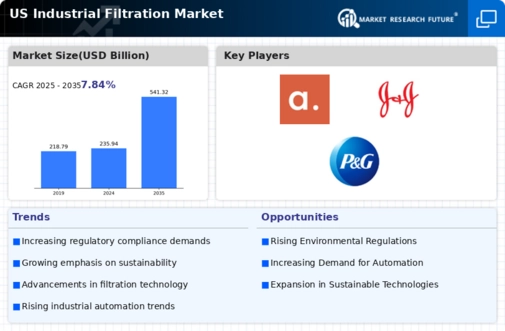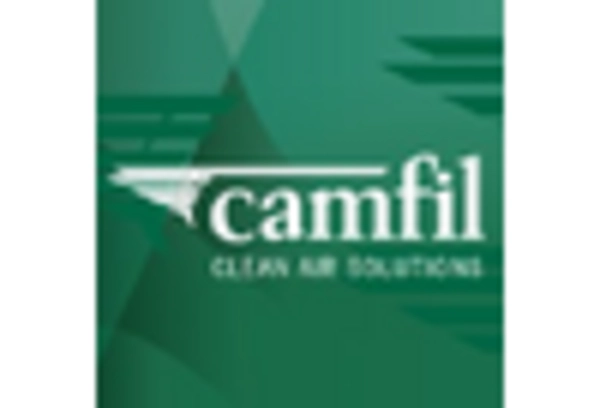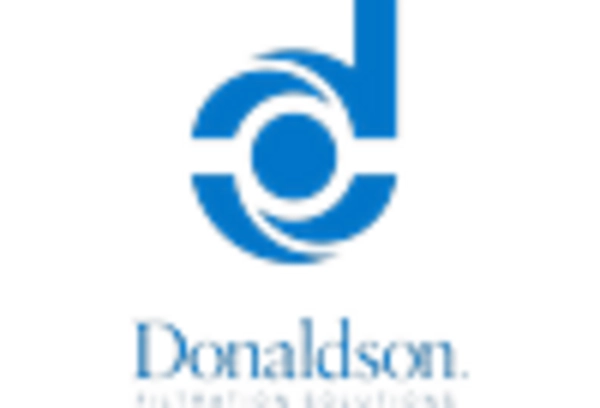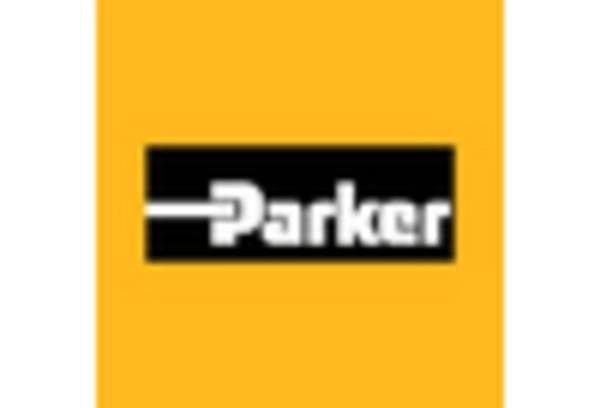Rising Environmental Regulations
The industrial filtration market is experiencing a notable surge due to increasing environmental regulations in the US. Regulatory bodies are imposing stricter standards on emissions and waste management, compelling industries to adopt advanced filtration solutions. This trend is particularly evident in sectors such as manufacturing and energy, where compliance with regulations can lead to substantial financial penalties. As a result, companies are investing in filtration technologies that not only meet regulatory requirements but also enhance operational efficiency. The market is projected to grow at a CAGR of approximately 6% over the next five years, driven by the need for sustainable practices and cleaner production methods.
Increased Focus on Health and Safety
The industrial filtration market is being propelled by an increased focus on health and safety standards across various industries. Companies are recognizing the importance of maintaining a safe working environment, which includes minimizing airborne contaminants and ensuring the quality of processed materials. This heightened awareness is leading to greater investments in filtration systems that can effectively capture harmful particles and improve air quality. As industries strive to protect their workforce and comply with health regulations, the demand for advanced filtration solutions is expected to rise, contributing to market growth. The market is anticipated to reach $4 billion by 2026.
Expansion of Manufacturing Activities
The industrial filtration market is benefiting from the expansion of manufacturing activities in the US. As the manufacturing sector continues to grow, driven by increased production capacities and technological advancements, the demand for efficient filtration systems is also rising. Industries such as automotive, aerospace, and electronics are increasingly adopting filtration solutions to enhance product quality and operational efficiency. This trend is likely to result in a compound annual growth rate of around 5% for the industrial filtration market over the next few years. The expansion of manufacturing activities is expected to create new opportunities for filtration technology providers, further stimulating market growth.
Technological Advancements in Filtration
Technological innovations are significantly influencing the industrial filtration market. The introduction of advanced materials and filtration techniques, such as membrane filtration and nanotechnology, is enhancing the efficiency and effectiveness of filtration systems. These advancements allow for the removal of smaller particles and contaminants, which is crucial for industries like pharmaceuticals and food processing. Furthermore, the integration of automation and monitoring systems is streamlining operations, reducing downtime, and improving product quality. As industries increasingly seek high-performance filtration solutions, the market is expected to expand, with a projected value reaching $5 billion by 2027.
Growing Demand for Water Treatment Solutions
The industrial filtration market is witnessing a growing demand for water treatment solutions, driven by the need for clean and safe water in various industrial applications. Industries such as food and beverage, pharmaceuticals, and chemicals require high-quality water for their processes, leading to increased investments in filtration technologies. The US water treatment sector is projected to grow at a CAGR of 5.5% over the next few years, further propelling the industrial filtration market. Companies are focusing on innovative filtration methods to ensure compliance with health and safety standards, thereby enhancing their operational capabilities and sustainability efforts.

















Leave a Comment